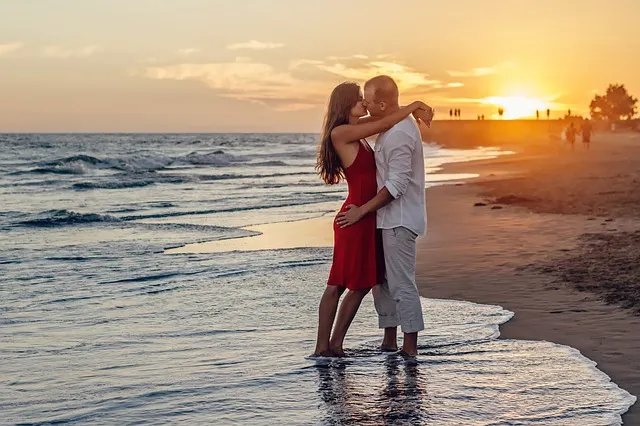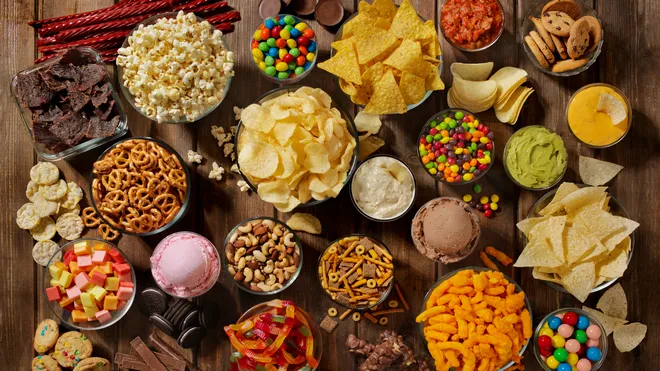Britain’s 47,000 pubs have been hit as hard as any sector by the lockdown. For an industry that thrives on social interaction, enforced closure, for some, is an existential crisis. Takeaways and deliveries may have provided a stopgap for a few, but for most, the only thing that will save the pub is getting bums on bar stools, pints in hands and Sunday roasts on the tables.
As inherently convivial places, where people mix in close proximity, pubs are expected to be among the last venues to reopen fully. So when the Prime Minister announced a slight easing of lockdown restrictions on May 10, landlords and publicans were hoping for positive news.
The message was a mixed bag. In short, hospitality venues may be able to reopen on July 4, as part of phase three of the easing of the lockdown, subject to approval by medical advisors. In reality this will be with severe distancing measures in places – measures that, for some, make opening up barely worthwhile.
The pub that opens in July – if it opens in July – will likely be nothing like the pub that is part of the “inalienable right of free-born people of the United Kingdom”, to borrow from Boris Johnson’s own terminology.
How will pubs reopen?
Pub owners have been looking around the world for clues as to what a socially distant drinking culture may look like. Many have turned their gaze towards Europe, Australia and America, where bars are tentatively reopening. In Italy, they display notices reminding customers to keep physically distant. In Australia, customers are limited to one per four square metres, and a maximum of 10 drinkers on site overall.
On May 19, the first piece of potentially coherent instruction came in the UK, in the form of a document submitted to ministers by UKHospitality, an industry trade body. The document announced a raft of plans for reopening, everything from banning salt and pepper shakers and customers propping up the bar, to limited menus. It emphasised there must not be a one-size-fits-all approach.
“We are working closely with the Government and the whole industry to ensure that pubs are ready to reopen their doors,” says Emma McClarkin, chief executive of the British Beer and Pub Association (BBPA). “It is important that as pubs reopen they maintain their unique experience whilst keeping staff and customers alike safe.”
So what might a pub look like if it reopens on July 4?
Fewer customers, further apart
Scottish brewery and pub chain BrewDog is in a unique position, considering it has pubs across the world, many in places that have reopened – or, in the case of Sweden, never shut. This week, its COO, David McDowall, pleaded with the British Government to reduce the two-metre distance rule to one, in line with World Health Organization advice.
“An important learning is that distancing [in Oslo, where BrewDog has recently reopened] is one metre,” says McDowall. “When we worked out how many bums on seats we could get when we reopen [in the UK] at two-metre social distancing, we would operate at 40 per cent capacity. We could probably get to 70-75 per cent of capacity with a one-metre ruling in place. This is something we need to be very mindful of as we build the guidelines in the UK.” Within a couple of weeks, the Oslo branch was operating at 80 per cent of possible turnover.
Simon Enemy, CEO of the Fuller’s pub company, agreed, saying “I think it’s really important that [the rules] are relaxed by the time the pubs reopen.” A one-metre rule, Enemy explained, would allow four times more customers.
For Jonathan Neame, CEO of the pub group Shepherd Neame, a two-metre distance would be “profoundly challenging”. Neame told the Telegraph that the two-metre rule will be a “critical dynamic” in the ability for pubs to reopen. “The difference is exponential between one and two metres.”
For now, most publicans are assuming a two-metre rule will be in place when they can reopen.
At the Brook Inn near Plymouth, a community pub, John Govier is worried that his clientele, many of whom are among the older generations, will choose to stay away. Two regulars recently visited the pub’s car park to check in (remaining in their cars) and said they would “wait to see what happens” rather than be the first customers through the door.
Govier reckons the current two-metre rule would in practice become four metres when all directions are taken into account. This would mean the pub’s 225 seated capacity would be reduced to 30 – a colossal loss of income. If a lone drinker comes in, one person would take up four spaces. Yet Govier is determined to make something work: “we’re going to give it a damned good try,” he insists.
Al fresco drinking – and open doors
Some country pubs may fare better. With plenty of outdoor space, enough diners and drinkers could come without compromising social distancing rules.
Tom Stovold runs seven pubs in Sussex and Kent, mostly food-led country pubs, some of which are currently offering takeaway. He is “very tentatively” informing staff that a July 4 opening is possible. Stovold believes trade will be down by up to 50 per cent, due primarily to consumer confidence – many people will stay away initially, or see how things play out before flocking back to the boozer. Nevertheless, “we want to be there, with all the pubs that do open,” Stovold explains.
His pubs vary in size, but most have relatively spacious gardens. He paints a picture of what his post-lockdown pubs might look like. The front door would have to remain open, so nobody touches the handles. There’d be a clear screen at the bar to protect staff, if bar orders were indeed possible. A third to half of all tables will be lost. “We are looking at individual private dining pods in the garden, which we’ve tentatively said can be booked for up to six people per household.”
John Tompkins says his pub, The Devonshire Arms in Middle Handley, Yorkshire, has only had to remove three restaurant and two bar tables to comply with distancing, while his outdoor area has plenty of space under a gazebo to accommodate 70-80 guests. “I can’t wait to come back, I’m 200 per cent confident the day we open will be rammed, we might have to turn people away.”
Steve Worrall, the managing director of pubs, inns and hotels at St Austell Brewery, which owns 182 sites in the West Country, admits it could be a challenge to police a post-lockdown beer garden, but believes the vast majority of customers will behave and adhere to physical distancing guidelines.
Major pub operators including JD Wetherspoon, Admiral Taverns were asked about their approach to reopening but declined to comment, while Marston's said it is working with the BBPA regarding guidelines.
Urban challenges
City pubs may find things a little trickier. Often smaller with poky beer gardens (if at all), and in many instances mostly standing, opening in July may be unviable. Rob Star, who runs six pubs in north and east London, opened one, in Hackney Downs, for takeaway beers last weekend, in a bid to test the economic viability.
“I think [July 4] is a very optimistic opening date,” he explains. “Maybe some hotels and cafes will be able to deal with social distancing better than pubs. Maybe those pubs that are food-led, or in large premises can socially distance their tables, but our premises are fairly small, some with no outside area, so for us to put those measures in place would be very difficult.”
Damien Devine’s pub, The Old Red Lion Theatre Pub in Angel, has the double whammy of being a destination pub, thanks to its attached fringe theatre. He has calculated that, with current distancing guidelines, only 10 people would fit in the theatre. With the pub relying heavily on theatre guests and local workers (many of whom will be working from home for the foreseeable future), reopening wouldn’t make economic sense.
Devine is worried that as soon as he is legally allowed to reopen, the full cost of running a pub will return. “It’s a really bad equation: no theatre, reduced custom and therefore revenue, with a full operating cost.”
He hopes the government will extend grants, loans and furlough schemes, as does Worrall who says: “baring in mind how long it might take to get back to normal, it won't be business as usual. It will be a crying shame if Government misses the opportunity to protect the industry.”
A limit on pints – and prices?
Other mooted measures include PPE for staff, physical distancing, a limit to three pints, tables restricted to household members, screens between tables or at the bar, plastic cups only, toilets cleaned after each use, ordering by app, and more. Many, of course, would be almost impossible to enforce.
Food and drink offerings may change, too. Piers Baker of the Sun Inn in Dedham, Essex, doesn’t believe people will be up for paying £25 on premium main courses; menus may be more simple. Stovold says he will look for cheaper and more local ingredients. One of his pubs has a carvery, which opens up a whole new can of worms; carveries could go the way of hotel breakfast buffets. Baker adds that his real ale offering will have to be reduced, as a tapped firkin only lasts three days.
Will the punters return?
Some publicans believe people will be itching for a proper pint, rather than a tin or bottle of beer. The first few days after opening, especially if the sun shines, could see difficulties maintaining distancing and some people turned away. It also remains to be seen whether, once the first few cold lagers have been downed, people will enjoy the sterile atmosphere of a socially distant boozer.
Keith Miller, the Sunday Telegraph’s restaurant critic, admits to enjoying a “depopulated pub”. “There’s a sort of transgressive thrill about a quiet boozer. But the clue’s in the name – a public house should be a space where everyone can be at their ease. I won’t be happy if I know that everyone else in the place is grieving for what they once found there: the chatter and laughter, the closeness.”
Beer and pub writer Adrian Tierney-Jones agrees that a solo outing can be a delight, but admits pubs post lockdown will be “unlike anything we will have experienced in pub life before. No more crowding at the bar, that buzz you get from a busy pub will be muted, and you might start to feel as if you are in a church.” Yet Tierney-Jones thinks these measures would be a “worthwhile price to pay to see the reopening of such a vital and valuable part of our cultural lives.”
Pub writer Chris Arnot agrees: “A well-kept pint of draught ale? Can’t wait for the first sip, even if the surrounding atmosphere may be somewhat clinical for a while.”
Will you return to your local pub if it opens? Share your thoughts in the comments below



